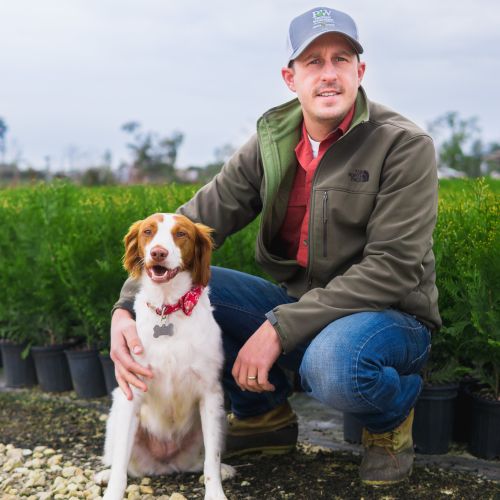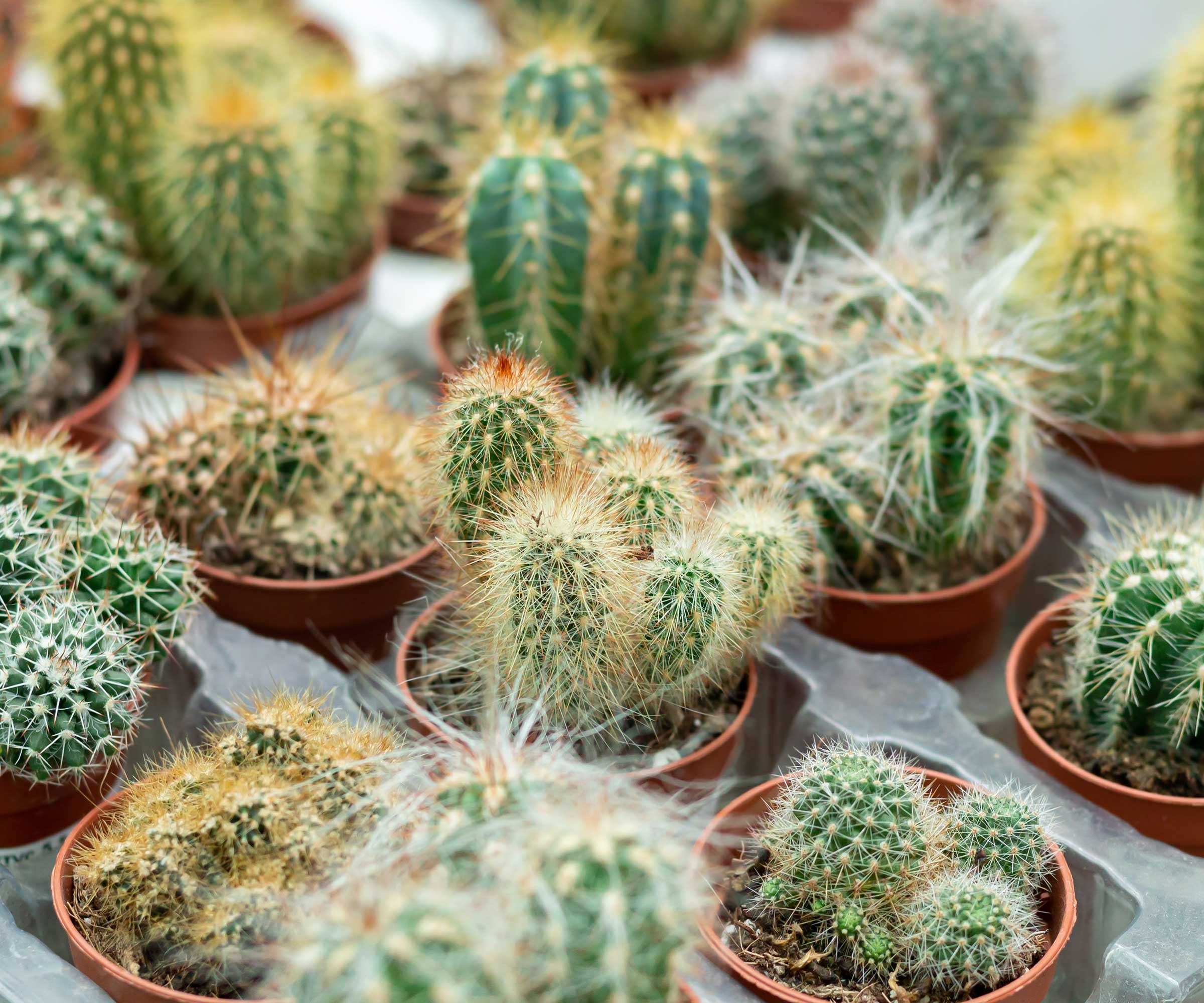How to make your own cactus potting mix – an easy DIY to give your desert houseplants a happy home
It's all about creating a growing environment that resembles their native habitat


There's no doubt watching your houseplants grow bigger brings a sense of pride, knowing you've successfully nurtured them and they're growing healthily. However, this can lead to plants eventually outgrowing their current planter, requiring you to repot them and give them a new home.
The best potting soil for indoor plants varies between types of plants, due to their differing needs, so you can't just use the same growing medium for all plants. Repotting a cactus requires a different type of mix than repotting a monstera, for example.
While there are plenty of commercial cactus potting mixes available online and in stores, it's much more rewarding to make your own cactus potting mix. Plus, plant experts say it's fun and easy to do. Here's everything you need to know.
An easy cactus potting mix recipe

Whether you have cactus plants in containers as part of your landscaping with succulents and cacti or you grow cacti indoors, it's important to provide plenty of drainage for these desert plants because they don't do well in oversaturated soil. Here, we take a look at an easy recipe to make your own cactus potting mix.
You will need:
- Well-draining houseplant potting soil
- Sand or perlite
- Orchid bark
- Horticultural charcoal
- Optional pebbles
The first place to start with making your own cactus potting mix is having an appropriate base:
'A basic cactus potting mix typically consists of one part regular potting soil,' says Alex Kantor, owner of Perfect Plants Nursery.
Design expertise in your inbox – from inspiring decorating ideas and beautiful celebrity homes to practical gardening advice and shopping round-ups.
You can use a general purpose houseplant potting mix (from Amazon), or a special cactus potting mix (from Amazon). The important thing to look for is something well-draining that will prevent your cacti sitting in an overly wet mixture.
The next step is to add 'one part coarse sand or perlite,' Alex describes. This adds further aeration for cactus roots, he explains. Either of these ingredients will work well - this potting sand from Amazon and this perlite from Walmart are good choices.
It's wise to also add in one part orchid bark (from Amazon), once again aerating the mixture and helping with moisture management.
Finally, to further prevent issues of houseplant root rot and to keep common houseplant pests and diseases at bay, add in a handful of horticultural charcoal (from Walmart).
Make sure to then mix these ingredients together well to complete your DIY cactus potting mix.
You optionally may want to add a layer of pebbles (from Amazon) to your cactus pot - this can be an especially attractive feature when growing cacti in terrariums or in an outdoor container garden.

Alex has worked in the horticultural industry for over 20 years and grew up on the farm since his childhood years. Alex is an expert on landscape trees, shrubs, and indoor plants. He is passionate about growing and helping others learn the trade.
Why these are the best ingredients for cactus potting mix

Cacti are native to dry, desert environments where they often grow in sandy soil. As Alex notes, it's important to 'make sure the potting mix you create has excellent drainage properties to mimic the cacti's natural environment.'
That's why using ingredients like perlite, sand, and orchid bark are beneficial. They create air pockets in the mixture, adding aeration and allowing excess moisture to drain away freely.
Not having a cactus potting mix with these elements can lead to your cactus turning brown and going mushy, as a result of oversaturated roots. Not only this, but the bark also retains some moisture which is released slowly, helping to ensure your cactus doesn't become dehydrated.
Meanwhile, using a good quality, well-draining houseplant potting mix ensures your cacti are receiving all the essential plant nutrients for growth. 'When soil health is good, it will naturally feed the cacti,' says Donna Letier, plant expert and CEO of Gardenuity. 'Nitrogen, promotes top of cactus growth, phosphorus promotes root growth and flowers, and potassium also encourages flowering cacti to bloom,' she explains.
As mentioned above, horticultural charcoal also brings a whole host of benefits for plants. It absorbs toxins and aids moisture management, keeping mold and mildew away and discouraging pests as a result.
'When repotting cacti, you should also choose pots with drainage holes, and make sure the cactus receives plenty of sunlight,' Alex advises.
Shop essential ingredients for your cactus potting mix

Donna Letier is the CEO and co-founder of Gardenuity, a company merging gardening with the wellness sector through personalized container gardens and gardening experiences.
FAQs
Do cacti need fertilizing?
While it can be beneficial to fertilize cacti, especially flowering cactus plants, Alex Kantor, owner of Perfect Plants Nursery notes: 'Cacti are not heavy feeders. You can add a small amount of liquid cacti fertilizer (from Amazon) diluted to half-strength during the spring and summer growing seasons, but be careful not to over-fertilize.'
Not only can you make your own cactus potting mix for repotting cactus plants, it can also be used to grow a cactus from cuttings. Just make sure to provide an optimal environment for cuttings to root, including plenty of sunlight, warmth, and moisture, and familiarize yourself with houseplant propagation mistakes to avoid.

Tenielle is a Gardens Content Editor at Homes & Gardens. She holds a qualification in MA Magazine Journalism and has over six years of journalistic experience. Before coming to Homes & Gardens, Tenielle was in the editorial department at the Royal Horticultural Society and worked on The Garden magazine. As our in-house houseplant expert, Tenielle writes on a range of solutions to houseplant problems, as well as other 'how to' guides, inspiring garden projects, and the latest gardening news. When she isn't writing, Tenielle can be found propagating her ever-growing collection of indoor plants, helping others overcome common houseplant pests and diseases, volunteering at a local gardening club, and attending gardening workshops, like a composting masterclass.


